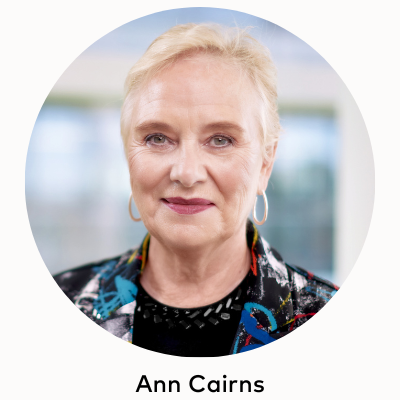The work of Title IX isn’t over
June 23, 2022 | By Ann CairnsPicture this: The wind and waves are whipping in a fury. You’re plunged into the frigid North Sea with no coastline in sight. You must escape from a submerged helicopter that has crashed miles from shore.

This was a training exercise when I started my career as a research engineer for utility company British Gas more years back than I care to admit. Most notably, I was the only woman on an offshore oil rig, among a group of more than 40 men.

The instructor facilitating the drill made me go first. After the rest of the group made the same plunge, we did it again and again, but each time he made me go first. After several rounds, I asked why he was singling me out.
“Because if you go first,” he replied, “the 40 men behind you will realize they can do it, too.”
I was young, tiny and blond. The wetsuit they supplied was made for a man because they didn’t make them for women, and I nearly drowned because it didn’t fit correctly and icy seawater gushed in.
I realized a critical life lesson that day that I would carry with me. That lesson would go on to inform and define my career and ambition to drive gender equity in the workplace: Women have long blazed trails and led society to greater feats, but had to work twice as hard while getting half the credit. The truth is, the world was designed by men for men without women in mind or in partnership.
Today is the 50th anniversary of the passage of Title IX, a U.S. law that prohibits discrimination on the basis of sex in any education program or activity receiving federal financial assistance. Designed to address vast inequalities in education, Title IX has had the most dramatic and lasting impact on women’s and girls’ sports. Before Title IX, colleges and universities spent only 1% of their athletic budgets on women’s sports, and only 1 in 27 girls played sports. A funding gap still persists, but today, 2 in 5 girls play sports.
Title IX has had a ripple effect far beyond America, pushing the needle towards greater gender equity across the world. In fact, the movement has morphed and expanded to reflect an intersectional lens, with more nuances and more people, including protecting students from discrimination based on sexual orientation and gender identity.
Today is an apt reminder that we have fought long and hard for gender equity, and yet, the fight is far from over.
Our world is full of brilliant possibilities. But they’re not always open to everyone. And where identities intersect — such as race, sexual orientation or physical ability — those opportunities can slip even further out of reach. This holds us all back.
The last few years have only made this clearer. Is that woman in the perilously ill-fitting wetsuit so different from the lone woman who finds herself in the corporate boardroom or C-suite, trying to make her voice heard in a room of men who still ask her to make the coffee? She is a Black woman entrepreneur trying to get access to capital. And she is a young girl fascinated by science but doesn’t see herself reflected in any of the adults around her.
The work to ensure equal opportunity is far from done. There is clearly still a need for a great change. It’s why I chair the 30% Club, where we run the largest cross-company global mentorship program in the world with more than 2,600 participants across more than 190 companies. That’s why Mastercard participates in Boards for Impact, which now has more than 60 company executives sitting on not-for-profit boards to ensure that more women find their way into leadership positions.
It’s also why Mastercard has worked to ensure that women earn $1 for every $1 a man earns and why we’ve linked executive and employee compensation to closing the gender pay gap. It’s why Mastercard is one of the largest supports of women’s sports, including soccer and our title sponsorship of the Mastercard Mini 10K, which began in 1972 as the first woman-only road race. It’s also why we’re partnered with Financial Alliance for Women, which works to increase women's access to bank accounts, loans, investment products and capital, and why we’ve brought Girls4Tech, our award-winning STEM education program for young girls, to 2 million girls in 52 countries and counting. And it’s why we stand up for LGBTQ rights.
The sum total of our efforts, along with that of others driving this work in the public, private and nonprofit sectors, means greater gender equity for all, not just in sports, but wherever women seek to fulfill their potential.
“I supposed the purpose of my bill,” Patsy Mink, the Hawaii congresswoman who sponsored Title IX, later reflected, “is really to free the human spirit to make it possible for everyone to achieve according to their talents and wishes.”
Whether that means a business suit, a tracksuit or a wetsuit, let us use the 50th anniversary of Title IX as inspiration to create the next chapter of what’s possible, for all women, everywhere.
